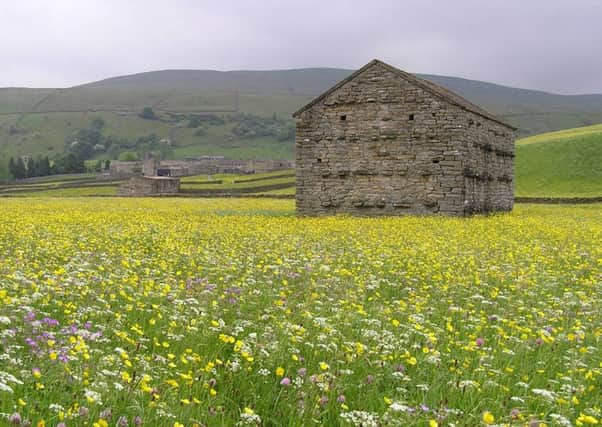Huge strides taken to restore iconic Dales meadows


Some £186,500 has been raised through public donations during the last three years alone to help fund the extensive conservation work led by local charity, Yorkshire Dales Millennium Trust (YDMT).
Over the last decade, some 600 hectares of degraded meadows in the Dales and the Forest of Bowland Area of Outstanding Natural Beauty have been restored and the ambitious project continues.
Advertisement
Hide AdAdvertisement
Hide AdMuch more work lies ahead to reverse the devastating long-term loss of the species-rich habitat across the country.
Before the Trust’s Hay Time Project began 10 years ago, just 1,000 hectares of meadows remained across the UK, leaving hundreds of species of wildflowers and plants, bees, birds and other native species at risk.
The charity has relied on the support of farmers and other landowners, as well as a range of partners including Natural England and the Yorkshire Dales National Park Authority, to make a difference and the work would not have gone ahead without donations from the public as well as other charitable funding.
Three years ago the project was running low on funds, prompting a Hay Time Appeal to be launched. Backed by Chris Myers, the award-winning Skipton-based show garden designer and television presenter, the appeal’s initial £150,000 fundraising target has been smashed.
Advertisement
Hide AdAdvertisement
Hide AdMr Myers, an ambassador for the project, said: “YDMT’s work to bring back wildflower meadows has really struck a chord with people, not only because these meadows are vital habitats for native wildlife, but also because they are a beautiful and iconic part of our landscape, and a living piece of our cultural history.”
A staggering 97 per cent of the UK’s lowland meadows have disappeared over the last 100 years, largely as a result of intensive agricultural practices to meet the demands of feeding a growing population. Only one per cent of upland hay meadows remain.
Farmers have been very willing to engage with the project, according to Tanya St Pierre, the YDMT’s hay time officer.
She said: “The farmers that we have worked with this year have been really receptive and keen to revert the land back to what it was 20 or 30 years ago when they remember the farm they lived on having all those wild flowers.”
Advertisement
Hide AdAdvertisement
Hide AdA future focus of the project will be to connect meadows across the Dales, Cumbria, Lancashire and the Nidderdale Area of Outstanding Natural Beauty, to create “wildlife corridors”, she said. This approach will allow insects, birds and pollinators that rely on the habitat to thrive.
Such work is vital at a time when 60 per cent of native wildlife species are in decline, the wildlife officer said.
“We have to look to secure hay meadows for future generations and we have to incorporate stakeholders at a high level.
“Restoring hay meadows is fundamentally important, they are the best habitats for pollinators like bumblebees that provide a vital ecosystem service for our landscape; in terms of our heritage and links to our past, and they are an iconic part of the Dales landscape along with dry stone walls and barns which attract thousands of tourists a year and which in turn benefits the economy.”
VAST WILDLIFE ADVANTAGES
Advertisement
Hide AdAdvertisement
Hide AdThe hay meadows at Muker in Swaledale are considered to be a jewel in the crown of hay meadows in the Yorkshire Dales.
But the best time to see the meadows in bloom has just past, falling between mid-June and mid-July before the cutting date for hay meadows in restoration schemes arrives on July 15.
As well as practical conservation, the Hay Time project provides education and runs events to help more people experience the meadows’ beauty and understand the role that they play as wildlife habitats.
The very richest meadows can support up to 120 plant species and five acres of hay meadow supports one tonne of insects, as well as threatened bird species such as yellow wagtails and curlews.